hey friend!
I'm Martina.
I provide practical, time-saving strategies that actually work—so you can engage your students, teach effectively, and reclaim your time from the exhausting planning-grading cycle.
Browse Our ELA Resources
Guided Reading and Small Groups in Middle School PART II
If you’ve ever tried running guided reading or small groups in middle school, you know it’s no small task. Between managing class time, keeping students engaged, and juggling different reading levels, it can feel impossible to make it all work.
But I promise—small group instruction and guided reading absolutely belong in middle school ELA. And when you find a rhythm that fits your classroom, everything clicks.
This post is Part Two in my series on how I structure, organize, and implement guided reading in middle school. Here’s the lineup if you want to catch up or jump ahead:
- One: Guided Reading and Small Group
- Two: Student Routines, Daily 5, and More
- Three: Small Group Alongside Curriculum and Whole Group
📥 Want a head start? Click here to get my Middle School Guided Reading Recording Sheets sent straight to your inbox. You’ll also get access to my free small group toolkit and exclusive teaching ideas.

How to Use the Daily 5 Framework in Middle School
One of the biggest questions I get about small groups in middle school is:
“What are the rest of the kids doing while you’re meeting with groups?”
When I taught 5th and 6th grade, I used the Daily 5 model. It gave my students structure and independence, and it gave me the time I needed to meet with small groups.
Even though Daily 5 was designed for elementary classrooms, I’ve found it works beautifully with upper elementary and middle school students when you adapt it.
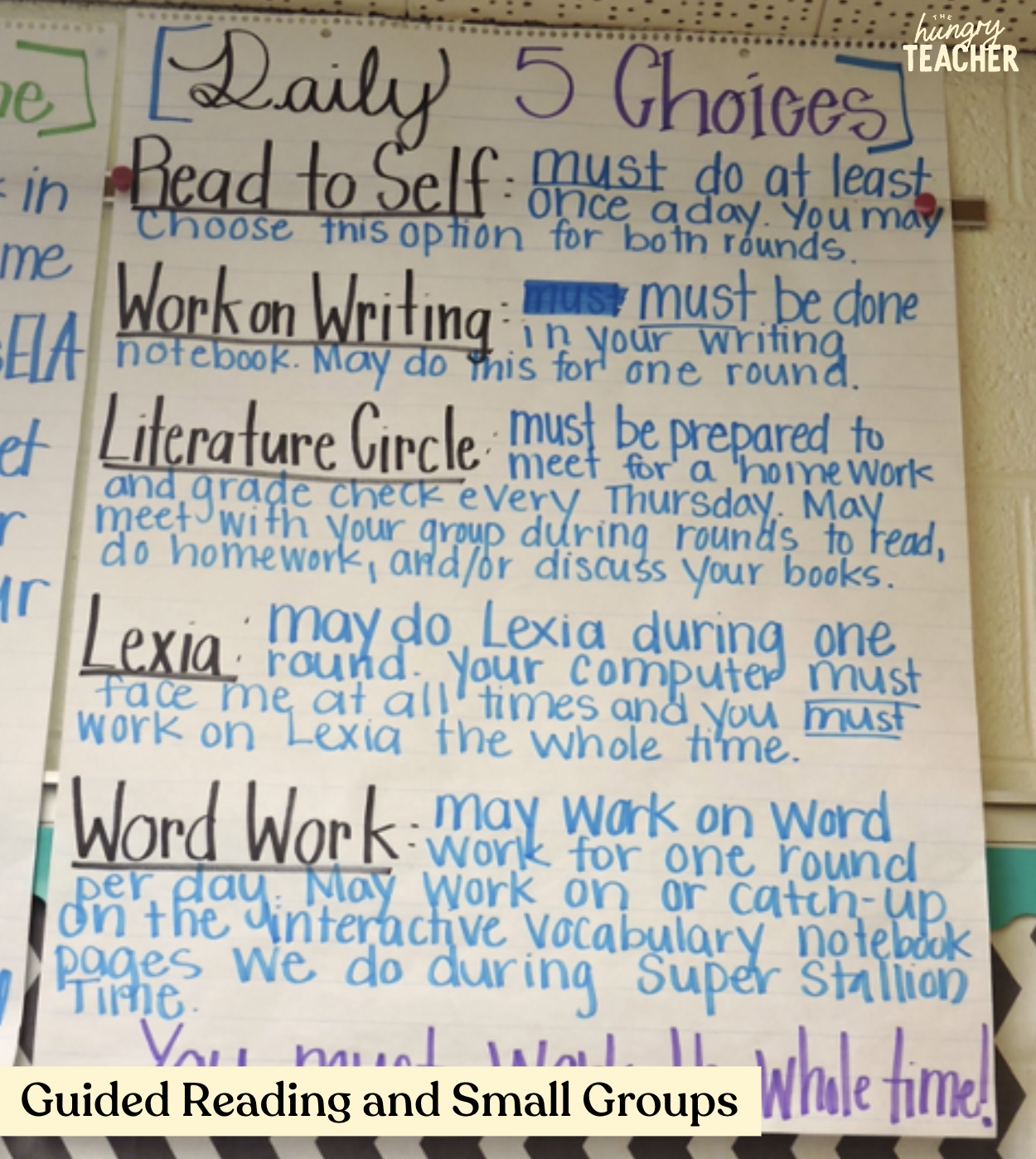
Daily 5 in Sixth Grade ELA
In 6th grade, my students had two Daily 5 rounds per day, usually around 15–20 minutes each. It was just enough time for them to get focused without losing momentum.
In 7th and 8th grade, I only did one round per day (about 15 minutes), since we had a shorter class period. Students could read, write, or work on Literature Circles during this time.
As the year went on, I gave my older students more choice and responsibility—especially once Literature Circles were up and running.
Here’s an example of a chart we made in 6th grade to help students keep track of their Literature Circle jobs. Later, I created packets with job descriptions, and eventually the system evolved as students became more independent.
Some groups needed a ton of structure, while others didn’t. For my more dependent readers, we sometimes worked through Literature Circle assignments during small group time so they could get extra support.
Keeping Track: Small Group Anecdotal Notes
When I taught 5th grade, I had a binder tab for each group. It worked—until I moved to 6th grade and started teaching two classes. Suddenly, I had multiple binders, multiple groups, and a whole lot of chaos.
I learned pretty quickly that I needed one flexible system that could grow and change as my groups shifted throughout the year. My groups fluctuated and moved around a lot. I was constantly switching kids. This meant my “perfectly” labeled binders weren’t helpful because they didn’t match the groups at all. I realized I needed more flexibility with my binders and group forms. The notes were used to drive my whole-group and small-group instruction. They also needed to be there to collect information about my students. It made sense that I just needed to find a system that worked for me.
How I Organized My Guided Reading Notes
Here’s the system that finally worked for me:
- One binder for both classes.
- Tabs labeled by day of the week (instead of by group).
- Generic note pages where I could write the group name, student names, and lesson focus for that day.

This let me be flexible when groups changed. At the end of the week, I reviewed my notes, adjusted groups, and prepped new lessons.

Later, I developed a more detailed note-catcher that included a skills checklist on the side. It helped me track which students needed extra support with specific reading skills and plan future lessons accordingly. The super tiny words on the right-hand side are a checklist of skills specific students need to work on. It helped make my small groups even more specific and needs-based.
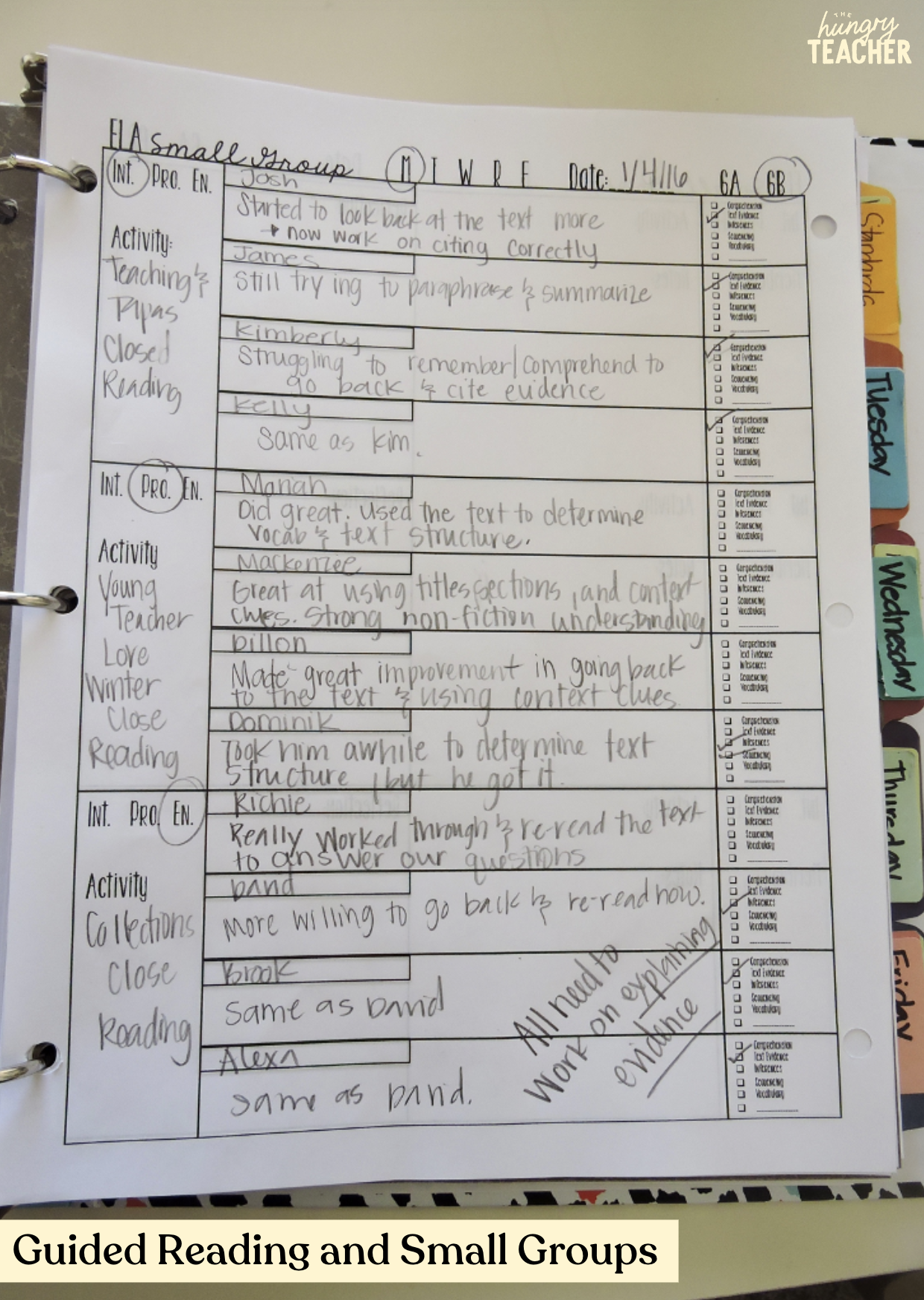
All of these forms (including my flexible note-catchers and weekly templates) are available in my FREE Middle School Guided Reading Resource Pack—you can grab them here.
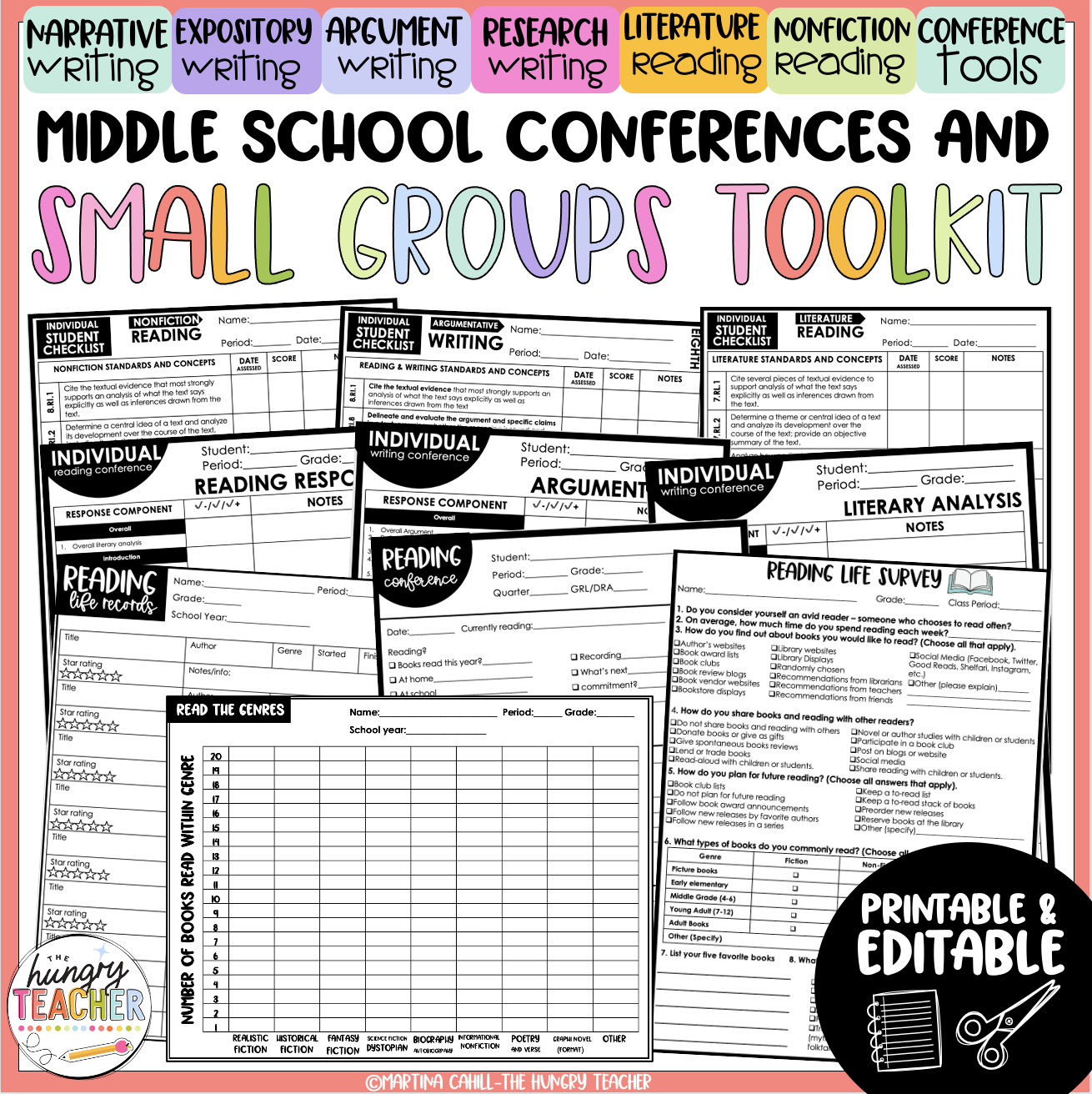
HOW I MAKE SMALL GROUPS WORK
Teaching small groups in middle school can be messy. Between off-task behavior, fake reading, and 45 students asking questions all at once, it can feel like total chaos some days.
But it’s also one of the most powerful and transformative things I’ve ever done in my classroom. Over time, it gets easier. You learn how to set expectations, build stamina, and refine your systems until everything runs smoothly.
💬 Real talk: Every year, I tell myself I’ll start small groups by week 6… and it usually ends up being week 12. My first year in middle school? More like week 26! And that’s okay. It takes time, patience, and a whole lot of flexibility.

What Helped Me Figure It Out
The two books that changed everything for me were:
- The Daily 5 by Gail Boushey & Joan Moser
- Reading in the Wild by Donalyn Miller
They shaped the way I structure my classroom routines and gave me the confidence to make small group instruction work in middle school.
Now, if the authors of Daily 5 walked into my room, they might not recognize it as a “true” Daily 5 classroom—but I’ve adapted it in a way that works for my students. And that’s what matters most.
What the Rest of the Class Does During Small Groups
After our whole group mini-lesson, I do a quick “Status of the Class” check. It takes just a few minutes, but it keeps everyone accountable and helps me see where students are in their reading.

I simply ask:
- “What are you reading?”
- “What page are you on?”
Then I jot down their answers on my Status of the Class form. You can get a free editable version here!
While I meet with small groups, students choose from our Daily 5 options:
Daily 5 Choices for Middle School ELA
1. Read to Self
This is always an option, and students can choose it for both rounds. I’ll never stop them from reading—ever. Even my most reluctant readers eventually start to enjoy this once they find the right books.
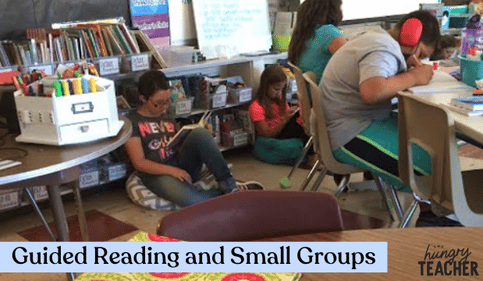
2. Literature Circles
Students can:
- Meet with their groups to read
- Discuss the book
- Work on their Literature Circle jobs or homework
Some students prefer to read with their groups; others work independently. I like having flexible options that fit different learning styles.
When we shifted to remote learning, I even made digital Literature Circle forms so students could collaborate virtually. You can grab my printable and digital versions here.

3. Lexia (Computer Literacy Program)
Our district provides Lexia, a self-paced literacy program. It’s a great option early in the year while I’m building routines and independence with other students. Eventually, most students move away from it and toward actual books—but it’s a great support tool.
For additional reading practice, I also love CommonLit.org for high-quality, middle school–appropriate texts.

4. Work on Writing
Students can:
- Free write in their notebooks
- Work on essays or stories
- Type final drafts
- Write about their reading
I use my middle school ELA Writing Units for writing instruction, and my students know exactly what to work on because of these lessons.
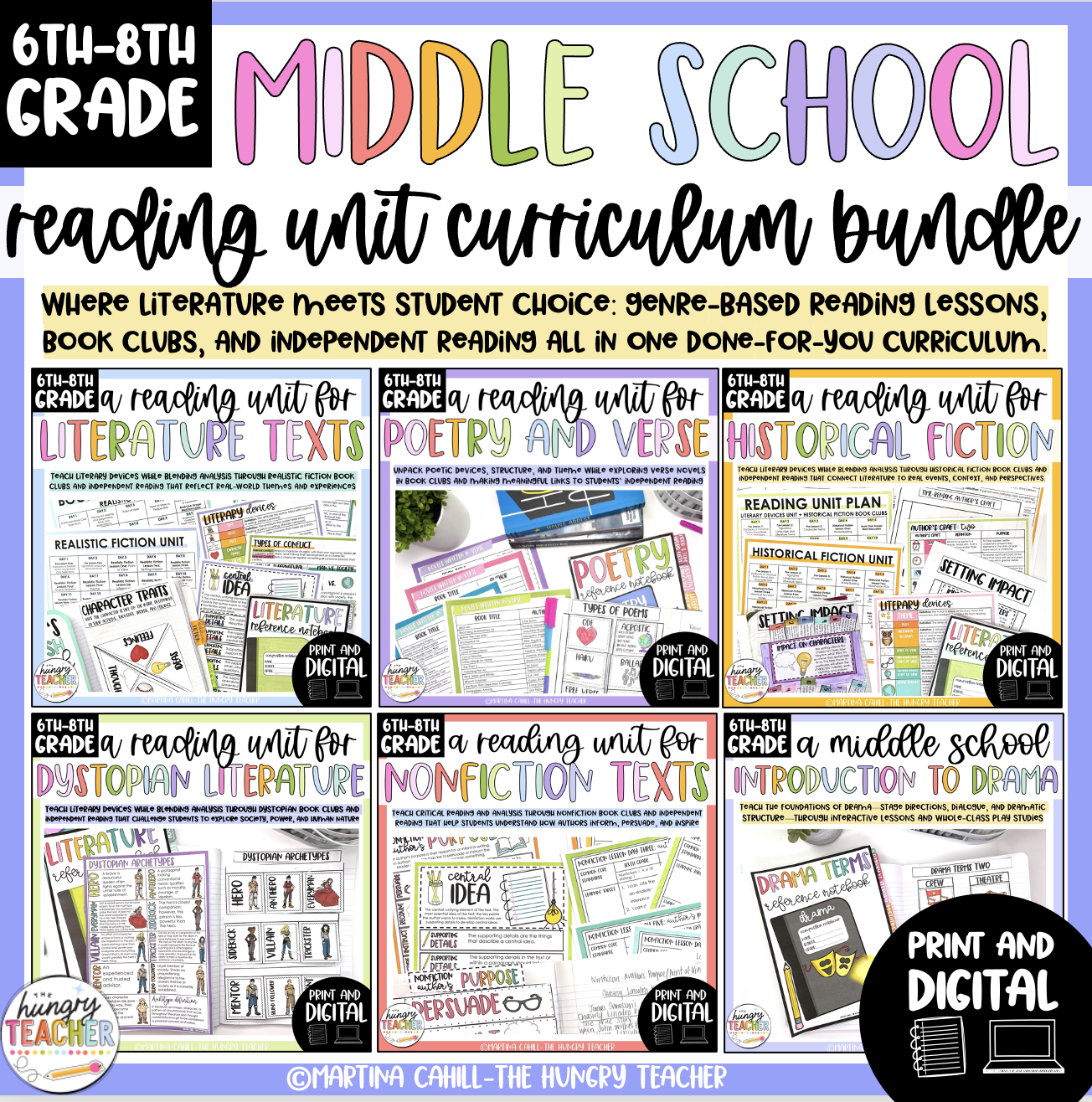
My Small Group Schedule
Here’s how this all fits into my ELA block:
I teach in a K–8 school where I get about 100–110 minutes per ELA class, which gives me flexibility for rotations. After our bell ringer and core lesson, we move into Daily 5 rounds where I pull small groups while students work independently.
If you’re in a middle school with shorter periods, don’t worry—you can still make it work. The key is consistency and clear routines.
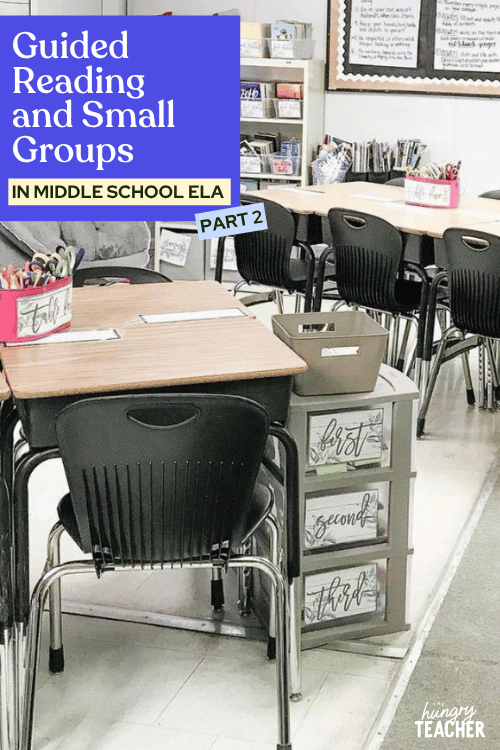
Up Next: Small Groups Alongside Whole Group Curriculum
That’s it for Part Two! In the next post, I’ll share exactly how I integrate small-group lessons into our core ELA curriculum—without doubling your workload or losing your mind.
Other posts in the small group blog series:
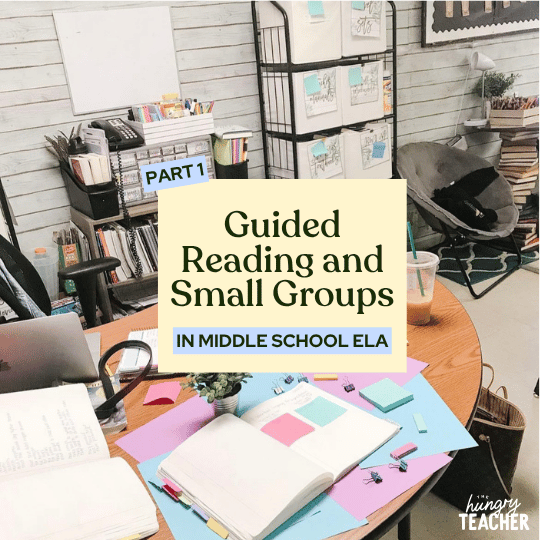
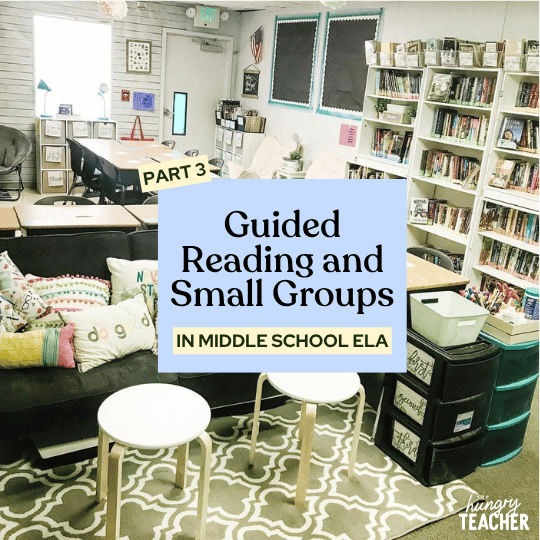
Get free middle school guided reading forms sent
to your inbox.
Subscribe to The Hungry Teacher and get the middle school ELA small groups toolkit sent straight to your inbox. You’ll also get access to all of my exclusive freebies and teaching ideas.
Want a sneak peek at teaching The Hungry Teacher way—with support, structure, and strategy?
When you join the waitlist for The Hungry Teacher’s Hub membership, you get three free classroom-ready resources: a theme unit, an expository writing unit, and a grammar unit introducing mentor sentences. Plus, you’ll get immediate access to a selection of exclusives from the Hub, including editable sub plans, pacing guides, and more.
No strings attached. Just resources you can use right now—and a heads-up when the Hub opens.
3 Free Middle School ELA Units—yours to keep!
JOIN THE WAITLIST + A FREE GIFT
Where to next, line leader?
Welcome to The Hungry Teacher! We create resources that are easy to use, practical, and get results. Teach with confidence—and make it home before dinner.
xo, the hungry teacher
Thanks so much for this series! I bought your novel study bundle this summer and I have been using those with my 5th graders as a whole group read aloud. It's a great addition to my ELA block and my kids really enjoy it. It has also been fun for me using books I probably never would have read aloud otherwise (Freak the Mighty, Locomotion).
I have an 8:1:1 self-contained class but my biggest struggle with reading groups is having only 1 student at a certain reading level. For example I currently have students at levels E, F, H, K, N, P (2 students) and Q. How would you recommend grouping them for small groups?
Thanks Martina!
Thank you so much for your sweet words! So glad you love teaching with novels. I wish I could get the whole world reading with novels!
As for groups, I know what a struggle than can be! I don't have the same range, but my 6th graders do range from levels O-Z. My struggling readers tend to vary the most. That being said, I would pull the E, F, and H and pick a text that is an F and really try to dig deep with all of them. I have found (sometimes the hard way) that it's not always the text, but what you do with it. For me, my goal is always just making them love reading, so who cares if your K is reading a G! :). Just have them really analyze what they're reading. That's how I feel about the novels too! When I read Holes, with my 5th graders, it was technically to low and too high for more than 1/2 my class, but how they had to write and response during that time was how I differentiated and really pushed them as readers and writers.
I know you are probably already doing some of these things, or thinking about them, but sometimes it's just nice to hear it from someone else's voice! Hope this helps!
MUAH!
Martina
I was wondering what your Super Stallion time looks like? I work in a relatively small school, that is relatively new and we are trying to implement an intervention block but we are struggling with a good format. Any advice or help would begreat! I would be happy to chat via email kwalker@mht-stl.org
Hi! Thank you so much for reading my post.
So my Super Stallion time is a SUPER work in progress. K-3 in our building uses "Burst Groups." I literally have no clue what they are, but they divide the kids up based on their DIBELS scores, each teacher then prints the lessons for their groups of kids, and then teach the lessons.
Fourth and Fifth grade, have three classes each. Again, they have them divided into three groups: Intensive, Proficient, and Enrichment.
The intensive kids do rotations with their teacher, so he meets with 2 small groups per day to work on skills they need (his group is also the smallest so he can really meet their needs). The proficient kids' teachers does novel studies, in a whole group setting. The enrichment teacher uses Junior Great books. Essentially, they read a short story, have a socratic seminar, and write.
My whole set up is different because I'm in 6th grade, and I have been making it up as I go. In general, it's like a controlled Daily 5. There are four days a week of intervention and my kids go to one station each day: Meet with their literature circle, Lexia, Read to Self, or Teacher. I make the schedule, so I can control the groups. I despise rotations and kids moving to different stations during a set time in one session, so I like that they focus on one station each day. Sometimes my 6th graders get bored and/or restless and I will do some whole group close reading or discussions to break it up.
Hope that helps, but feel free to ask more questions if you need clarification.
Thanks!
Martina
I love your blog, and I could really use some advice! I am an 8th grade ELA teacher and have 47 minute class periods. I am desperate to implement guided reading into my classroom, and my biggest stumbling block at this point is wrapping my head around the scheduling of the class period and week and what the rest of my class is doing while I'm meeting with small groups. I see that your kids have Daily 5 Choices–so once they choose, is that their activity for the remainder of the ELA time? I notice you mentioned in the above comment that you don't like kids moving to different stations during a set time, and I agree. I think that would invite behavior issues that would interfere with my small group time. So would you suggest that I schedule certain students to complete certain stations each day while I meet with small group OR allow them the choice of station or daily 5, but do not allow them to move to more than one station per day. I'm not sure if my question makes sense–my mind is all over the place trying to get this under control so that I can help my readers!! Thank you so very much!!
How do you hold the kids accountable at each station?